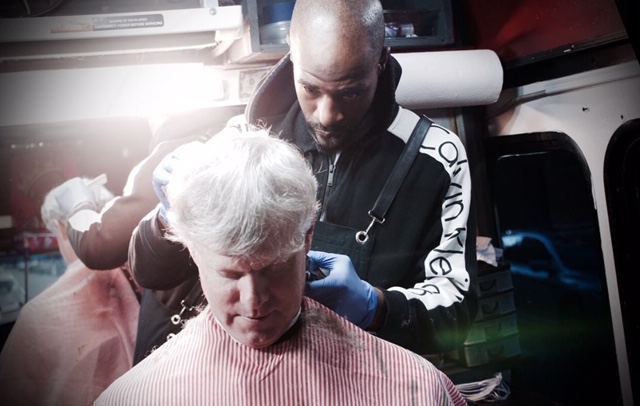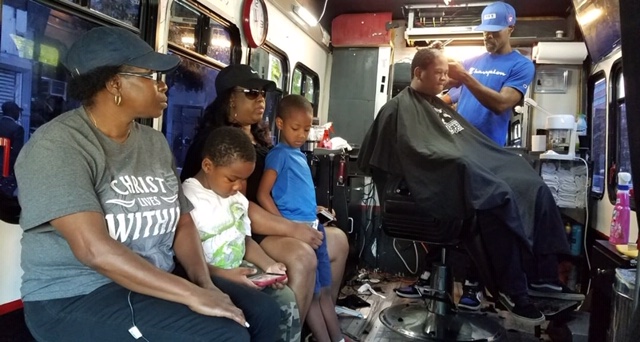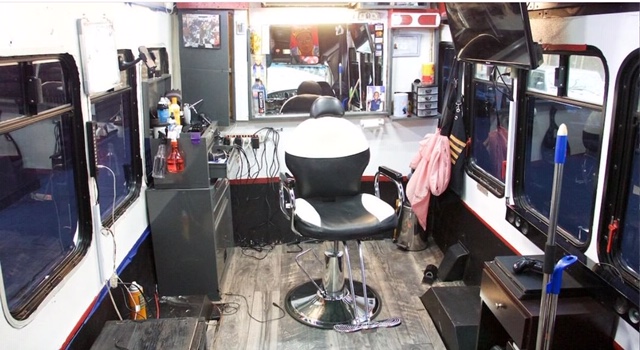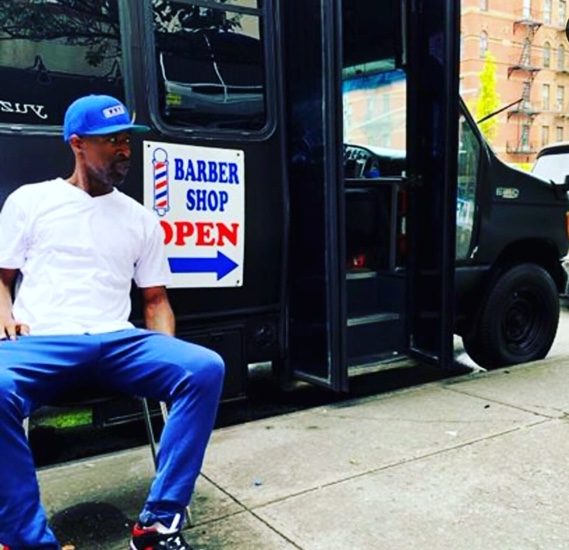[ad_1]
Over the last decade, the sharp rise in the cost of housing, public transportation, and other life necessities make it challenging for the working-class to maintain a decent standard of living, especially in New York City. And, if that‘s not enough to contend with, gentrification is an economic weight making it even harder to keep one’s head above water.
Just ask Linwood Dillard, III. He is a 36-year-old lifetime resident of Harlem, NY, and a former business partner in the Designs and Lines storefront barbershop, until it was gentrified in 2017. The barbershop was equipped with a premium sound system and flat-screen televisions and was located in Central Harlem on Malcolm X Boulevard, and just two blocks from Martin Luther King Jr. Boulevard. Although Dillard believed in self-reliance and had a dream, the ruthless stranglehold of gentrification forced him out of business.

(Photo Credit: Diamond Clark)
After five years in business from 2012 to 2017, the commercial rent for Designs and Lines skyrocketed 143%, from $3,500 to $8,500 per month. Even the best who know how to balance a monthly budget couldn’t squeeze a spare $5,000 to cover an unexpected rise in rent. The constructive discharge of black businesses amid an uncompromising urban renewal plan is not an uncommon experience. But neither is Dillard’s personal story.
People trapped in an unforgiving cycle of poverty search for a legal side hustle to make ends meet while others choose a path that often leads to incarceration. Like some young black men with an entrepreneurial mindset, limited options, and misdirection, Dillard chose the path of easy money adorned with ghetto charm: a drug dealer.
So, what happened to Dillard?
In 2005, Linwood served a one-year prison sentence for selling narcotics. After his release in 2006, he struggled to find consistent work in the Big Apple. But, as Frank Sinatra sings in the classic New York, New York, “If you can make it there, you can make it anywhere.” Although the song bears truth, the daily struggle is real and securing gainful employment is not guaranteed. Eventually, Dillard turned to the art of cutting hair to make an honest living because he vowed not to return to the streets.

(Photo Credit: Diamond Clark)
After losing the barbershop and going through periods of homelessness, he tapped his entrepreneurial spirit to start a new business: Harlem’s first and only mobile barbershop.
Since commercial real estate in Harlem is beyond reach for small business owners, Dillard saved to purchase a used Ford E-350 made in 2005 that had an odometer reading of 126,000 miles. The fully paid truck was old and needed work, but he rolled up his sleeves and installed wooden floors, a music system, and more to make it appealing to customers.
Initially, he bought a used generator to operate clippers and other electronics, but it was noisy and not aesthetically pleasing to neighbors. So, he subsequently installed solar panels on the roof of the truck to reduce energy costs while demonstrating social responsibility.
This new opportunity makes sense, but does it make money?

(Photo Credit: Linwood Dillard, III)
In a conversation with Dillard concerning the profitability of his new venture, he stated that he makes more money now because his monthly operational expenses are only ~$700/month, which is ~$3,000/month in cost savings compared to his original storefront lease—not to mention the savings at the new commercial market rate of $8,500/month.
The only lingering issues and immediate risks to his business are traffic agents who write parking tickets and the potential for new progressive policies that may threaten the survival of small business owners in New York City.
While Dillard doesn’t foresee a chance to get back into a reasonably priced storefront, he hopes that the old truck holds up long enough so that he can make a living, while saving money to buy a new truck. But for now, his loyal customers are happy, and the joy of small business ownership is inspirational.
[ad_2]
Source link

